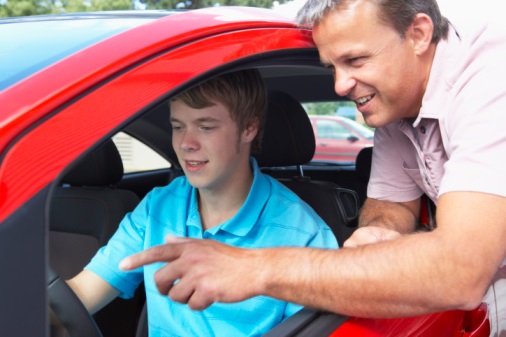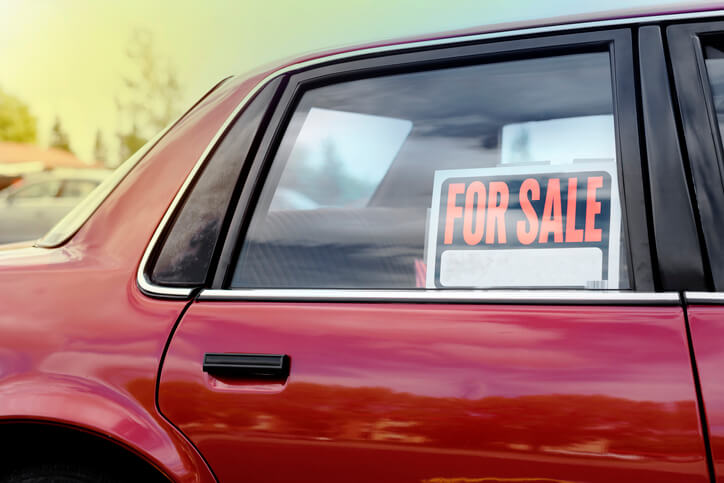Most teenagers associate driving primarily with fun and liberation. Although this thinking is well founded and holds true to a large extent, teen drivers tend to be so overcome by the joy of finally getting that long-sought freedom and independence from their parents, that they often forget about the responsibility and the potential dangers that come with it. It is essential to communicate how to safely drive to your teen, and how many distractions exist in and around the car.
According to the Centers for Disease Control and Prevention, motor vehicle accidents are the leading cause of death for teens in the U.S. The main risks for teen drivers stem from their immaturity and inexperience, making them prone to reckless driving. Distracted driving, drowsy driving, along with drunk and drugged driving, are the leading causes of accidents involving teen drivers. With these facts in mind, it’s clear that teenage drivers need help and guidance on how to become more responsible and improve their ability to avoid accidents and stay safe while behind the wheel. In this regard, parents can play a crucial role in making sure their teenage kids are safe and responsible drivers. For example, there are car tracking devices for parents with teen drivers. First and foremost, they can do that by leading by example, as well as by giving their kids some useful safe driving tips and helping them adopt safe driving habits.
Get expert tips and advice to help you prepare and protect the teen drivers in your life. Download your free PDF guide developed by The Hartford’s corporate gerontologists.
How to Talk to Your Teenage Kid About Safe Driving?
When it comes to talking to your kid about safe driving, the first thing to remember is that you should go about it as calmly and as methodically as possible. This is may be the best approach to communicating to a teenager about anything, but especially about something as critically important to their well being as being responsible and attentive while behind the wheel. Take a positive and approach and include them in a conversation rather than sounding like you’re dictating from on high. You want your teen to be receptive to the information you’re sharing.
A calm, confident, and friendly approach is key. First, do your research and gather the facts and statistics about the consequences of risky driving behaviors and the leading causes of motor vehicle crashes involving teenage drivers. Some of the most resounding statistics that you could use include the fact that 60% of all teen fatalities in motor vehicle accidents involve a drunk driver, drowsy driving is a real problem, and that the rate of fatal accidents involving some sort of distraction are higher among drivers under the age of 20 than among any other age group. This way, you would be addressing the most prevalent factors behind teen driver crashes.
Armed with that sort of information, you can then sit down with your kid and talk with them about avoiding risky behaviors. Discuss how driving while impaired can easily be fatal, just as using a cell phone while behind the wheel, speeding, or running a red light can be. Remind the driver that there are devices out there that are hands free. Remember to keep the tone of your conversation pleasant and informative tone to not spark any rage while behind the wheel. Try your best to explain that your advice, the rules and the limits you impose are meant to protect your children and are not to be ignored. Make it clear to your kids that failure to respect the set boundaries will have consequences, such as loss of driving privileges grounding, and loss of cell phone or computer use, to name a few. Showing your kids that you are interested in helping them become excellent drivers, and that you are concerned about their well-being and how they behave behind the wheel, can make a huge difference in how they respond to your advice.
Also, talk about how, aside from safety risks, irresponsible driving can affect a teenager’s life in other aspects. Traffic tickets or accidents and accumulation of points on a teen’s driver’s license result in costly fines and fees, and can lead to license suspension and revocation, which means losing driving privileges, and their freedom, for a certain period of time. Tell them that drunk or drugged driving can result in a jail sentence, and that conviction on such a serious offense can affect their chances of getting into a good college or landing the job they want down the road.
Leading by Example
Like many other traits, driving habits of teenagers are greatly influenced by observations while growing up of their parents behaviors behind the wheel. This applies for risky behaviors while driving, as well as good ones. Research shows that children who see their parents using a seatbelt are much more likely to buckle up when they grow up and start driving, compared to children whose parents don’t use this crucial safety feature. Not using a hands free device when talking or texting on a cell phone while behind behind the wheel, as well as driving while intoxicated, are also among the bad habits that many teenage drivers tend to pick up from their parents.
How to Save on Insurance for a Teen Driver?
Having in mind all of the risks associated with teen drivers mentioned above, and their susceptibility to reckless driving, it’s no wonder that insuring a teenage driver can be costly. No matter how hard parents work to ensure their children drive safely and responsibly, insurance premiums for young drivers will be higher than those for other age groups. However, there are several ways parents may save on car insurance for their children. For instance, you can have your kid complete an approved driver training course to make them eligible for a discount. Consider getting a car for the driver with safety features. Lastly, there is often a discount for students attending a school that is at least 100 miles away from their home, who have not taken their car with them.
Considering the potential safety and financial implications that reckless driving can have on teenage drivers and their families, it is clear that the people who are responsible for their upbringing have to make sure their teens adopt safe driving habits and avoid risky behaviors while behind the wheel. There are ways to monitor your teen’s driving performance, something to consider for an ease of mind. Doing your best to make your child a responsible and attentive driver is a huge part of good parenting. Being actively engaged in your child’s driver education process is an important way you can help them stay safe on the road.
Do you have any advice for parents of new drivers? Leave a comment below.







Extremely educational post! This post gives really quality data. I’m now done with it and observe that this post is truly amazing. Much obliged to you for this brief explanation and very nice information.